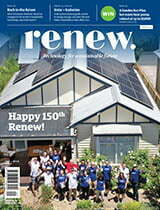The bike doctors
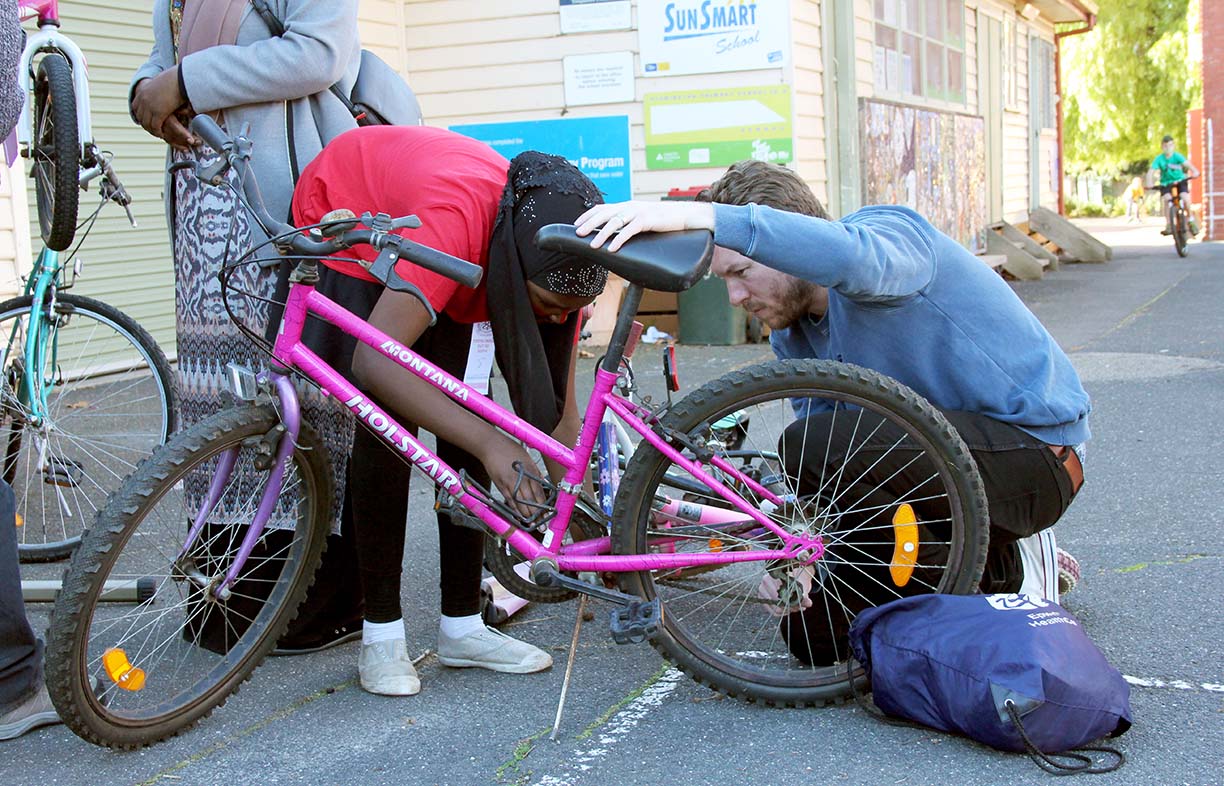
After starting small at a local school, Dr Cranky’s is spreading its bike-fixing, community-building initiative around Australia. Peter Foot finds out what’s needed to get kids riding.
It’s all too easy to fall into despair. Every day, it seems, one of our supposed leaders has said or done something idiotic, or completely at odds with factual evidence, or lacking in a basic sense of empathy. But I found hope recently—and humanity, innovation and just a little magic—in the enterprise of some “quiet Australians”, to borrow a phrase I heard somewhere.
“I was helping out at my daughter’s school for Ride 2 School day,” says Bart Sbeghen. “And I was putting bikes away and realised that a lot of them were unroadworthy. Sometimes the wheel was almost completely off or rubbing against the frame, or the brakes were stuck on.”
Bart surmised that some of the kids had actually pushed their bikes to school just to be involved.
“I was fixing bikes as I was parking them, so at least they could ride them home or more easily push them home.”
The next year Bart contacted the school—Flemington Primary in Melbourne’s inner west—and offered to help repair kids’ bikes in the weeks leading up to Ride 2 School day. It was a success and, the following year, another dad at the school, Peter Hormann, suggested they go one step further. He told Bart that there were probably some kids at the school without bikes. As well as doing repairs, why not ask people to donate their unwanted bikes, and then fix them up and see if anyone wanted them? At first Bart was sceptical.
Everyone’s got a bike?
“Everyone’s got a bike. That was my belief at the start,” says Bart.
But they put the call out anyway.
“We started out under the peppercorn tree at the school with our tools in a shopping trolley,” explains Bart. “We started just fixing our own kids’ bikes to generate a bit of interest, and then someone donated a bike, and someone else received the bike, and it went from there. Not at any great pace, but it was consistent. We realised that there are kids at schools who don’t have bikes, who can’t afford them.”
Peter and Bart soon began fixing donated bikes year-round and were given use of the bin shed to store tools and bikes. Five years later, over 900 bikes have gone through the ‘Bicycle Hospital’, as it became known at the school. And not only did Bart discover that the idea worked, but he forged a connection he wasn’t expecting.
“There was a whole section of the school community that I had no contact with and didn’t know anything about; that was the African community—recent migrants from Somalia and Sudan.”
Flemington is an inner-city area with expensive housing and progressive political leanings. But it’s also dotted with housing commission flats, many of them occupied by those recent migrants.
“So you have a divergent demographic. You have people with excess and you have people who need bikes. That’s part of why it worked.”
The program in action
I ride my bike over to Flemington Primary one afternoon to see the Bicycle Hospital in action. When the final bell rings out, kids start pouring out of buildings like ants out of a kicked nest. It’s the final day of term and the kids have evidently been doing some ‘extra-curricular’ activities, as many of them have their faces painted with stripes of red, blue or green.
A few minutes later the Bicycle Hospital is a scene of minor pandemonium. Kids are randomly picking up bikes and pedalling around the schoolyard (after donning helmets). Mums stand around chatting as their kids tear around the big plane tree in the middle. Peter has a tiny pink bike in the workstand. A girl in a green hijab watches while he explains something about tyre pressure and chain tension.
While he works, Peter tells me a bit more about the program, like how the kids came up with the name of the ‘Bicycle Hospital’ (because it’s where sick bikes go to get better), how sometimes the same bike will cycle through four or five different owners, how it’s kind of like a bicycle library. It makes so much sense to me that I wonder why nobody has thought of this before.
“And it’s a mental health outlet for dads,” he says. At first, I don’t quite understand. He goes on. “It’s something that tends to appeal to dads because it’s hands on and mechanical. There aren’t many other opportunities like it at schools. It gives us an opportunity to become involved in the school community, get out of the house or away from work, be involved in the kids’ lives.”
I get talking to Liz, who is there with her daughter, Fiona, who’s six years old. Liz has both donated to and received bikes from the Bicycle Hospital. Fiona rides around the schoolyard as we talk.
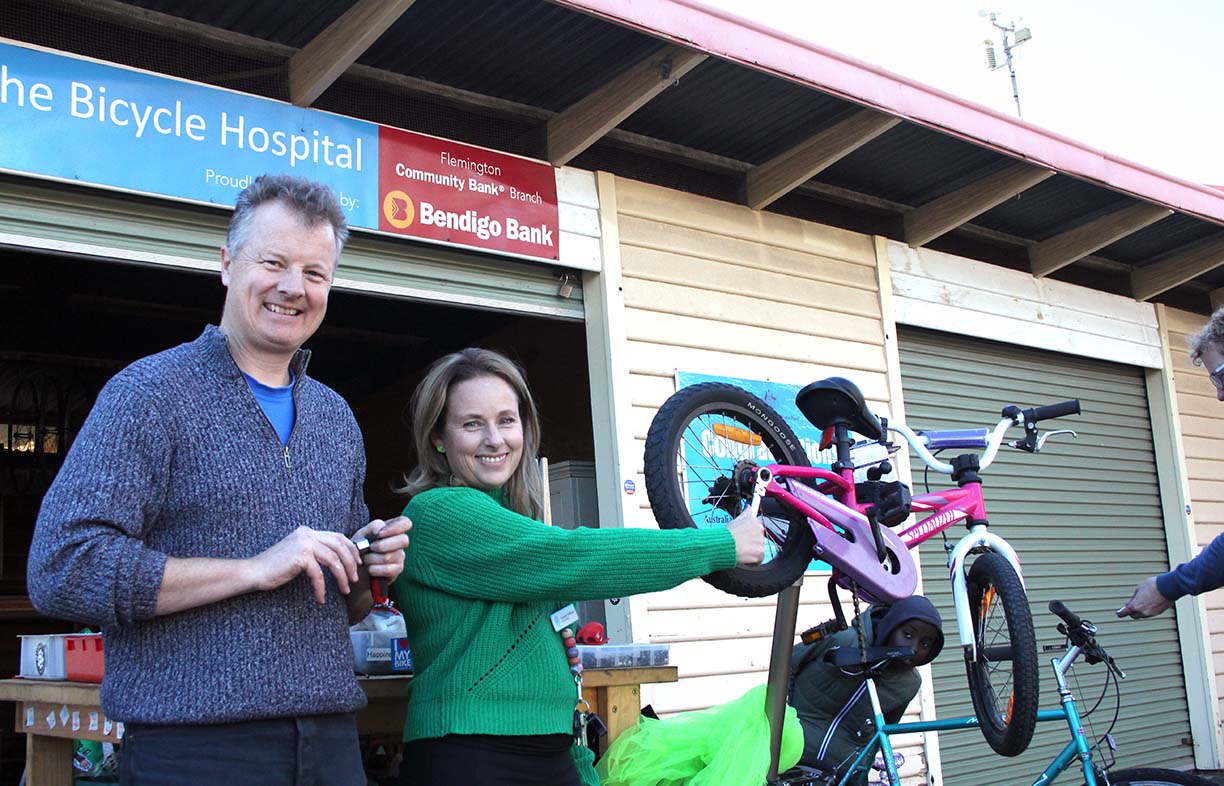
“It’s saved us a fortune,” Liz tells me. “It’s easy to access, it’s good for the community. Fiona rides to school every day. If only the council would get onto bike safety and put some more infrastructure in.”
Later I chat to another mum, Asha, who is there with her daughter, Kawsar.
“They all got a bike here. I’ve got four kids. For a lot of kids, it’s hard for them to buy a bike. It’s a lot of money. And every time we have a little bit of a problem, we come here and they fix it up for us. The kids have learned how to do the air pumping and now they do it at home. It’s like family here.”
I ask her if she’s donated any bikes to the Bicycle Hospital.
“Yeah, there was one time we brought one bike back here, we exchanged it for another one, a bigger one. It feels good to give a bike back. We saw another kid riding it one day, and my son said: ‘Oh, that’s my bike, the one I recycled!’”
As I watch people come and go, it feels like a democratic place. A place where people from all parts of the school community can come and chat and sort out bike business. Later on, once the schoolyard has cleared, I sit down with Bart on a bench.
“It’s the connection that neither of us expected,” he says. “Peter came to it from an environmental perspective; he wanted to save bikes from landfill. I just wanted to get more people riding bikes. But the thing that is probably most valuable is the connections we have made with other families. Bikes as a way to make connections—what a wondrous thing.”
Cranking up
After the success of the Bicycle Hospital at Flemington Primary, Bart started doing some research and realised that he’d stumbled upon a much deeper and broader problem than he had imagined. It’s estimated that around 250,000 primary school aged children in Australia don’t have bikes (based on the 2017 national cycling participation survey) and only 26% of them are meeting physical activity guidelines. This drops to 8% for adolescents aged 13 to 17. Furthermore, 25% of all children and adolescents are overweight or obese.
Bart wanted to know whether the Bicycle Hospital model would work elsewhere. With the help of parent volunteers, he trialled the program in a number of schools in Melbourne. It was a success, and last year he officially registered the organisation as a charity, under the name Dr Cranky’s. He is now beginning to franchise the model out to yet more schools.
“It’s in about 15 schools at the moment,” he says. “And about eight of these operate regularly, once or twice a week. What it needs is one or two volunteers or parents. I don’t run it, but I support it. We’ll help you get set up, we provide three or four training sessions, the full tool kit, a trolley, a workstand and pump, some helmets, some locks.”
One of the schools where Dr Cranky’s operates regularly is Clayton Primary in Melbourne’s south-east. Clayton doesn’t have the divergent demographic of Flemington and is overall less affluent. It is, however, very culturally diverse, with a high proportion of languages other than English spoken at home. I drive out there one afternoon with Bart. We pass strip malls and fast food outlets, and very suburban-feeling neighbourhoods. It’s distinctly middle Australia, the kind of place where elections are won and lost.
Once at the school I meet two of the parent volunteers, Dan and Sarah, and chat to them while they set up. I ask them what they liked most about volunteering with Dr Cranky’s.
“I like the idea that you actually see something that makes other people happy,” says Dan. “It’s hands on, and once you hand over the bike, there’s a smile on their face, and that’s priceless.”
“It’s good to work with this group, and the tools,” Sarah tells me. “I’m learning new skills, learning from Bart and Dan, and that’s good. And it’s good to be a part of the school community and feel like I’m contributing.”
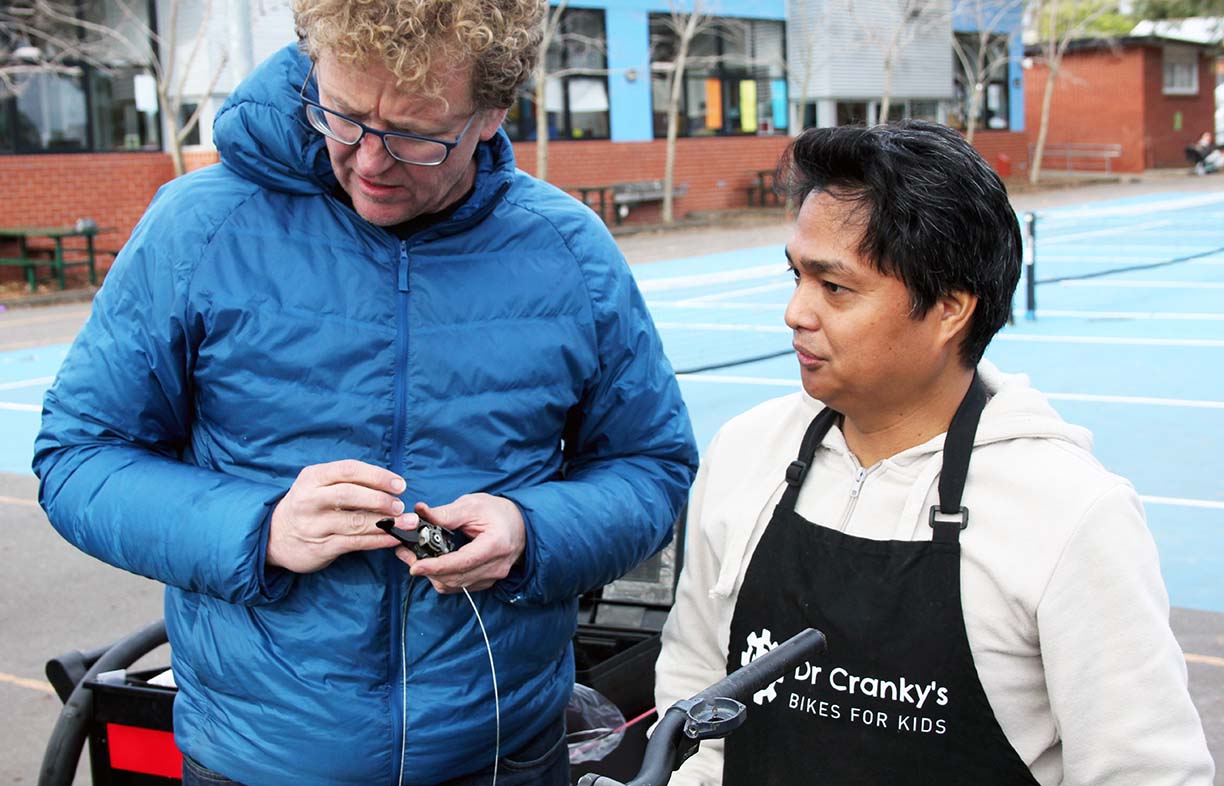
An increase of two to three rides a week
When a child receives a bike from Dr Cranky’s, a parent or guardian has to provide contact details. This is partly about risk management, but it also allows them to track the effect of the program. Three to six months after a bike is received, the parent is contacted and asked how many times per week the child is riding. On average, respondents reported an increase of two to three rides per week. When multiplied by the number of bike recipients across all schools, that’s an extra 180,000 bike rides per year. And on this metric, Clayton has been Dr Cranky’s greatest success, with bike recipients averaging four to five extra rides per week, roughly double the average.
“For poorer families in particular, a bike can be transformative,” says Bart. “There was one family who lived about a kilometre from the school. It was an awkward distance, like two bus stops. A bike allowed the kid to get to school independently and save on bus fares. The kids we give the bikes to, they’re independent and adventurous. They’re crossing major roads, they’re going places, they’re discovering places, they’re finding friends to go riding with. It’s not just around the block. They’re going to the footy park five kilometres away.”
So how large can Dr Cranky’s grow? Can the program reach the 250,000 kids without bikes?
“I’m not going to get all of them,” says Bart. “But If I could get, say 50,000 of them—that would take 100 or 200 schools—that would be something.”
Bart is looking for parent volunteers to help him fulfil his vision of a more active, connected and environmentally sound society. Back at Clayton, another volunteer is showing a boy how to inflate the tyres on his bike and lubricate the chain.
“It was actually pretty easy to set up the program,” Dan tells me. “Dr Cranky’s provides the tools and the training. And it doesn’t take a lot of time out of your week.”
I ask him if there are any particular moments that stand out for him, and his eyes light up.
“A lot of times kids come here with training wheels on. We dare them and say, ok let’s take them off. The parents are there. And we just push them out, and they start pedalling like hell and they’re going wooo, and they surprise themselves. And suddenly they’re like whoa, I know how to ride a bike! I see that time and time again. That’s priceless.”
It reminds me of something Bart said that day at Flemington: “The real reward is when you see the kid coming back so excited—the previous week you’ve given them the bike—and now they come back and they’re riding it and they want to show you. And there’s the magic of first getting the balance, you get to see that nearly every week. If you remember back when you first got your bike and you learned how to balance and ride it yourself, that magic happens every week in my life now. Magic still happens in the modern world.”
Stop Press! Congratulations to Dr Cranky’s which recently won the VicHealth Award for promoting health through physical activity. Dr Cranky’s is always interested to help new schools get started. See drcrankys.com.au
Further reading
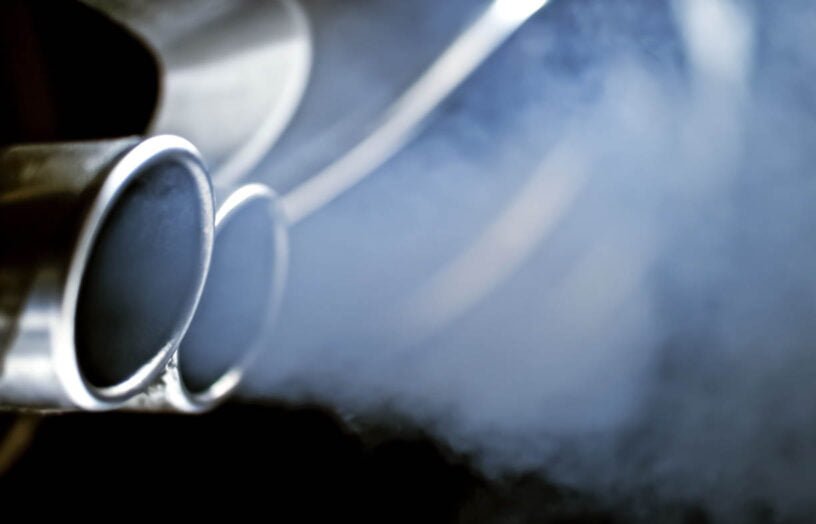 Transport & travel
Transport & travel
Petroleum is fast becoming a dirty word
John Hermans explains the negatives of the petroleum industry.
Read more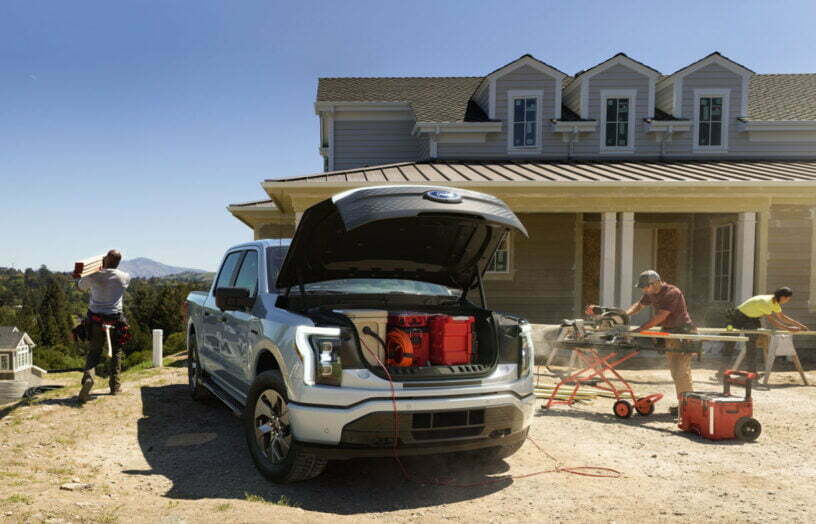 Transport & travel
Transport & travel
Bring on the electric ute
Bryce Gaton asks, will 2023 be the Australian ‘Year of the electric light commercial vehicle’?
Read more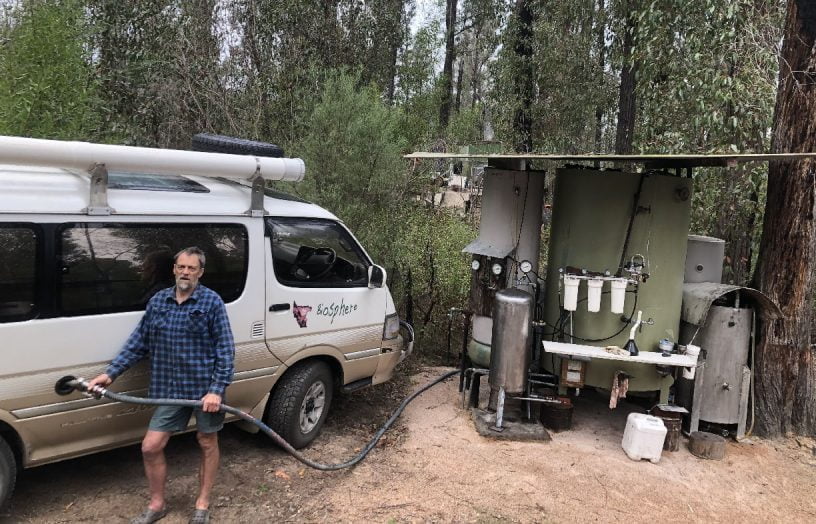 Transport & travel
Transport & travel
Biofuel vs battery
John Hermans gives his opinion on the best power source for electric vehicles.
Read more

